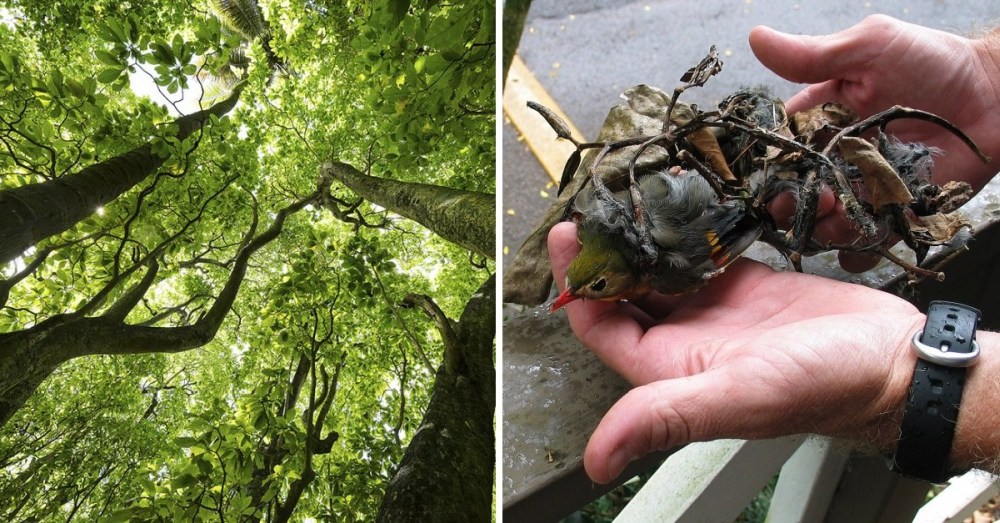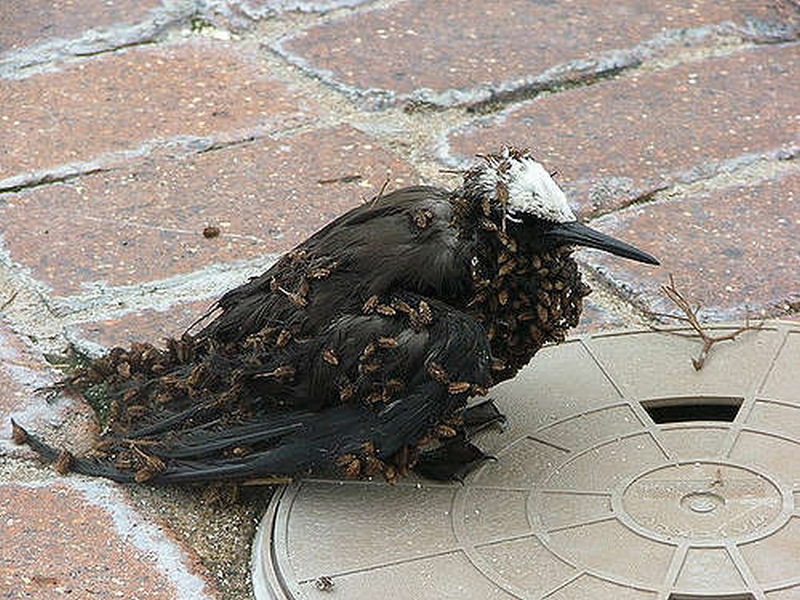These trees don’t fool around: they trap and kill birds with their deadly seeds, leaving the ground below littered with bones.

The Pisonia tree is a notorious bird killer. Image credit: USFWS & David Eickhoff
At a first glance, there isn’t anything unusual about these trees. Upon closer inspection, however, you may find mummified corpses of birds hanging above piles of small bones scattered on the ground. At this point, you probably wonder – just what on earth is the deal with these trees?
Well, if you ever come across anything like that, it means you just found a tree in the genus Pisonia. More commonly known as birdcatcher trees, they are notorious for their extremely sticky seeds that trap and kill birds.

Birds often die on the tree and their bodies will just keep hanging from the branches. Image credit: Joel Abroad
Birdcatcher trees are found in tropical habitats, mainly on islands around the Caribbean and Indo-Pacific. They produce long, sticky seeds that are densely covered with tiny hooks that cling onto pretty much anything that touches them. The seeds grow in large and tangled bunches with up to 200 seeds in a single bunch. They attract insects that then get stuck. This, in turn, also attracts seabirds, who will gladly go after these insects in the hope of an easy meal. However, they usually get tangled up in the many seeds that stick to the bird’s feathers.
In some cases, the amount of seeds it contracted doesn’t prevent the bird from flying away to another island, where the seeds would eventually fall off, thereby dispersing the seeds. But birds that become trapped are often unable to fly, and they either fall to the ground and die of starvation or get mantled by crabs and other scavengers. It also happens that they die in the tree, with their mummified bodies left hanging like Christmas decorations.
Furthermore, there have been occasions when the birds that got stuck in the branches caught the attention of owls and other birds of prey. They suffered the same fate and got caught among the Pisonia’s deadly seeds.

The small hooks pretty much stick onto anything that comes into contact with them. Image credit: Jorge C. Trejo-Torres
Scientists have been studying whether there is any evolutionary benefit for the trees from the killing of the birds. One theory suggests that Pisonia trees get more nutrients when the carcasses of dead birds cover their soil. However, studies have found that sprouts next to dead birds do not grow better or show elevated seedling survival compared to seeds without carcasses. In fact, the trees actually get much more fertilizer from the droppings of live birds.
According to another hypothesis, dead birds may drift in the sea further and could potentially spread the seeds to distant islands. Experiments, though, have shown that the seeds die in salt water within a few days, so this hypothesis has been disproven as well.

Birds that can’t fly because of the seeds will eventually die of starvation. Image credit: Cam Pervan
The seeds have to be sticky enough so they don’t fall off the birds, and since seabirds often come into contact with water, the trees need a very strong resin to spread effectively. All this leads to the unfortunate fact that hundreds of birds die every year because of getting trapped in the extremely sticky seeds.
Surprisingly, though, many seabirds like to nest on the Pisonia trees, but conservationists are trying to provide other nesting habitat to the birds by planting other native trees, and removing the seeds from birds.
Sources: Earthlymission.com








